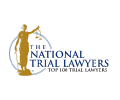Child pornography is a heinous crime that exploits and victimizes innocent children. California Penal Code 311 PC specifically addresses the criminalization and punishment of child pornography. The statute prohibits several acts related to child pornography, including production, distribution, and possession.
If you face charges for violating PC 311, seeking legal representation should be your immediate action. The complexity and seriousness of child pornography charges require the expertise of a skilled sex crime attorney.
At Sex Crimes Attorney, we can offer legal advice and guide you through the justice system. We will assess your case, examine the evidence against you, and develop a strategic defense strategy. We are dedicated to protecting your rights, building a robust defense, and striving for the best possible outcome in your case.
Child Pornography Laws in California
California has stringent laws to address the production, distribution, and possession of child pornography, recognizing the need to protect children from exploitation and abuse. Several statutes specifically address child pornography offenses, providing a legal framework to combat this heinous crime.
These include:
- Penal Code 311 PC: PC 311 is the primary statute that directly provides for child pornography offenses. The statute punishes acts involving producing, distributing, and possessing child pornography. Penal Code 311 forms the foundation of child pornography laws in California.
- Penal Code 311.1 PC: This statute prohibits the advertisement or solicitation of child pornography. It criminalizes any act of promoting, encouraging, or seeking child pornography, recognizing the role that such activities play in perpetuating the exploitation of minors.
- Penal Code 311.2 PC: This code focuses on the use of minors in the production of pornography. It criminalizes the involvement of minors in any form of explicit sexual conduct, including the creation or distribution of material involving their participation.
- Penal Code 311.3 PC: A law that targets the possession of obscene matter depicting minors engaging in sexual conduct. It addresses the possession of explicit material that involves minors, regardless of whether the possessor intends to distribute or sell it.
These Penal Codes work in conjunction to provide a comprehensive legal framework to combat child pornography offenses, ensuring that those involved in the production, distribution, or possession of such material can be held accountable under the law.
Element of Child Pornography Laws
The child pornography laws in California, as outlined in Penal Codes 311, 311.1, 311.2, and 311.3, encompass several key elements and provisions:
- Prohibition of explicit material involving minors: The laws prohibit the production, distribution, possession, advertisement, solicitation, and use of explicit material depicting minors engaged in sexual conduct. The focus is on protecting children from exploitation and abuse.
- Age of consent and willingness are irrelevant: Child pornography laws do not consider the age of consent or the minor's willingness to participate. The primary concern is the protection of minors from exploitation, regardless of their consent or understanding of the situation.
- Visual or written representation: The laws cover various visual or written representations of child pornography, including photographs, videos, digital media, computer-generated images, and textual descriptions. Any explicit material involving minors can fall under the purview of these laws.
- Production, distribution, and possession offenses: The child pornography laws address three distinct categories of offenses. They prohibit the creation or production of child pornography, the distribution or sale of such material, and the possession of child pornography with the intent to distribute, sell, or even for personal use.
Child pornography
California defines child pornography as any visual or written depiction, including photographs, videos, digital media, computer-generated images, or textual descriptions, that shows a minor engaging in explicit sexual conduct.
Explicit sexual conduct can involve various acts, and the age of consent or the minor's willingness to participate is irrelevant when determining the presence of child pornography. The laws emphasize the protection of minors from exploitation and abuse, making it a serious offense to produce, distribute, possess, advertise, solicit, or use explicit material involving minors.
What is the meaning of "matter" or "material"?
In the context of child pornography laws, the terms "matter" or "material" refer to any form of visual or written representation that depicts explicit sexual conduct involving minors. This encompasses physical photographs, videos, drawings, and digital files stored on computers, hard drives, or other electronic devices. By including various types of media, the legislation aims to address the evolving nature of technology and prevent individuals from exploiting minors through different means.
What Does "Sexual Conduct" Mean?
"Sexual conduct" refers to explicit activities involving minors deemed illegal under child pornography laws. In California, sexual conduct is broadly interpreted to encompass various strictly prohibited acts. These include, but are not limited to:
- Actual or simulated sexual intercourse involves explicit representations or descriptions of penetration, whether actual or simulated, between minors or minors and adults.
- Genital exposure: This involves the exposure of a minor's genitals for sexual purposes that fall within the scope of sexual conduct.
- Sado-masochistic abuse: Any representation or description of minors engaging in sado-masochistic abuse, such as bondage or sadistic acts, is considered sexual conduct.
- Masturbation or sexual touching: Acts involving the manual stimulation or sexual touching of a minor, whether self-inflicted or by another person, are included in the definition of sexual conduct.
Knowingly
Regarding child pornography laws, the element of "knowingly" plays a significant role in determining guilt or liability. To be guilty of violating child pornography laws, it is generally required that the accused act knowingly. This means that they were aware of the nature and content of the material in question, specifically that it depicted minors engaged in explicit sexual conduct. In other words, individuals must have known they were dealing with child pornography.
The "knowingly" requirement focuses on the defendant's state of mind and their awareness of the material's content. It is not a defense to claim ignorance or lack of knowledge about the presence of child pornography if a reasonable person would have been aware of the nature of the material.
The prosecution must prove beyond a reasonable doubt that the accused had knowledge of the explicit content and that it involved minors engaging in sexual conduct.
Obscene
Determining whether something is considered obscene involves a legal assessment considering specific criteria and standards. The concept of obscenity plays a crucial role in the application of child pornography laws and the evaluation of explicit material.
The determination of obscenity is typically based on a three-pronged test established by the Supreme Court in the landmark case Miller v. California (1973).
- The average person's standard: The material, as a whole, must be evaluated by the standards of the average person in the community where the material was distributed or exhibited. This community-specific standard considers local values, sensibilities, and societal norms.
- Offensive sexual conduct: The material must depict or describe sexual conduct in a manner that is patently offensive under contemporary community standards. This refers to conduct that goes beyond societal norms and is considered excessively explicit or graphic.
- Lack of serious artistic, literary, scientific, or political value: The material must lack serious value regarding artistic, literary, scientific, or political merit. If the material possesses such value, it is less likely to be considered obscene.
The determination of obscenity is highly context-dependent and subject to interpretation based on local community standards. These criteria are used to assess whether explicit material, including that involving minors engaged in sexual conduct, crosses the line into obscenity.
What Are the Penalties for 311 PC?
Violating Penal Code 311 PC can lead to severe legal consequences in California. The penalties imposed for these crimes depend on several factors, including the nature of the offense, the defendant's criminal history, and the specific circumstances surrounding the case.
Child pornography offenses can be charged as either misdemeanors or felonies, depending on the case details and the defendant's criminal record. A "wobbler" offense is a crime that can be charged as either a misdemeanor or a felony, based on the prosecutor's and judge's discretion.
Punishment For Misdemeanor Child Pornography
If convicted of a misdemeanor child pornography offense, the potential punishments can include:
- Misdemeanor probation: The court may impose a probation period instead of jail time, requiring the defendant to comply with certain conditions, such as attending counseling or treatment programs and avoiding further criminal activity.
- Up to one year in county jail: A misdemeanor child pornography conviction can result in a jail sentence of up to one year, during which the defendant served their time in local county jail.
- Fines: The court may impose fines between $1,000 and $2,500.
Sentencing For Felony Child Pornography
If convicted of a felony child pornography offense under PC 311, the potential sentencing can include the following:
- Felony probation: The court may impose a probation period, similar to misdemeanor probation, but with more stringent conditions due to the serious nature of the offense.
- Prison sentence: A felony child pornography conviction can result in a three years state prison sentence.
- Fines: The court may impose fines up to $2,500.
California Sex Offender Registration Upon Conviction
In addition to the above penalties, individuals convicted of child pornography offenses under PC 311 in California are also subject to mandatory sex offender registration. This means that upon conviction, they must register as a sex offender and comply with the requirements of California's Sex Offender Registration Act (SORA).
Sex offender registration entails providing personal information, such as address and employment details, to law enforcement agencies. Failure to comply with these registration requirements can lead to additional criminal charges and penalties.
Are there Immigration Consequences?
The conviction of a crime, including child pornography offenses, can have significant immigration consequences for non-U.S. citizens residing in the United States. Under U.S. immigration laws, certain crimes involving moral turpitude can have adverse consequences for non-U.S. citizens.
Potential consequences may include:
- Deportation/removal: A child pornography conviction can result in removal proceedings, leading to potential deportation from the United States.
- Inadmissibility: A conviction may render a non-U.S. citizen inadmissible to the United States. This means they may be denied entry into the country or face restrictions on obtaining a visa or green card in the future.
- Loss of immigration benefits: Convictions can lead to the loss of immigration benefits, such as a green card or visa.
- Difficulty obtaining naturalization: A child pornography conviction can significantly hinder an individual's ability to apply for naturalization and become a U.S. citizen.
Can a Person Have A Conviction Expunged?
Not all convictions are eligible for expungement, and certain requirements must be met to be considered for this legal remedy. In the case of child pornography offenses, expungement may be possible, if you meet certain requirements, including:
- Completion of probation: Generally, individuals must have completed their probationary period without any violations. For example, attending required counseling or treatment programs, paying fines or restitution, and complying with any other obligations set by the court.
- No new criminal charges: Applicants for expungement must not have incurred any new criminal charges since the completion of their sentence for the child pornography offense. Demonstrating good conduct and a commitment to law-abiding behavior is crucial.
- Passing a specified waiting period: Different jurisdictions may have varying waiting periods before an expungement can be sought.
- Evidence of rehabilitation: Showing evidence of rehabilitation is a critical aspect of the expungement process. This can include evidence of employment, education, community service, counseling or therapy, and testimonials from individuals who can vouch for the applicant's character and positive changes.
Expungement does not completely erase the conviction from an individual's record. Instead, it results in a dismissal of the conviction, which can offer certain benefits, such as improved job prospects and the ability to answer "no" to questions regarding prior convictions in some circumstances.
Does a Conviction Affect Gun Rights?
In the United States, the possession and ownership of firearms are regulated by federal and state laws, and certain convictions can result in the loss of these rights. A conviction for a child pornography offense can lead to losing gun rights. The loss of gun rights following a conviction for a child pornography offense is primarily due to the classification of such crimes as "felonies" under federal and state laws. Felony convictions often trigger restrictions on firearm possession and ownership.
Are There Legal Defenses?
When facing child pornography charges under Penal Code 311 PC, it is crucial to mount a strong legal defense to protect your rights and challenge the allegations against you. While each case is unique, several potential legal defenses may be applicable when contesting child pornography charges.
Below are some common legal defenses that can be explored:
Lack Of Knowledge Or Intent
Child pornography charges require the prosecution to prove you knowingly possessed, produced, distributed, or accessed explicit material involving minors. If you can demonstrate that you were unaware of the presence of such material or lacked the intent to engage in any illegal activity, it may serve as a defense in your case.
Illegal Search And Seizure
If the evidence against you was obtained through an illegal search and seizure, it may be possible to challenge the admissibility of that evidence in court. The Fourth Amendment of the U.S. Constitution protects individuals from unreasonable searches and seizures, and violating these rights can weaken the prosecution's case.
Lack Of Authenticity Or Tampering
It is essential to scrutinize the authenticity of the evidence presented by the prosecution. Digital evidence, such as images or videos, can be susceptible to manipulation, alteration, or misinterpretation. Challenging the authenticity or integrity of the evidence can cast doubt on its reliability and undermine the prosecution's case.
Violation Of Privacy Rights
In some instances, child pornography charges may arise from invading an individual's privacy or unauthorized access to their personal devices or online accounts. If your privacy rights were violated during the investigation, it could be a potential defense strategy to challenge the legality of the evidence obtained.
Mistaken Identity Or False Accusations
It is not uncommon for mistaken identity or false accusations to occur in child pornography cases. If you can provide evidence or establish a reasonable doubt that you were not involved in the alleged activities or that someone else falsely implicated you, it can be a strong defense in your case.
Police Entrapment
Entrapment occurs when law enforcement induces an individual to commit a crime they would not have otherwise committed. It may serve as a defense if you can demonstrate that you were coerced, manipulated, or persuaded by law enforcement to engage in child pornography-related activities.
No Child Pornography
When contesting child pornography charges, know that the burden of proof lies with the prosecution. To secure a conviction, the prosecution must demonstrate beyond a reasonable doubt that the material in question meets the legal definition of child pornography. As the defendant, you have the right to challenge the prosecution's case and question the validity of the evidence presented.
No Knowingly Act
In child pornography cases, the prosecution must prove beyond a reasonable doubt that you knowingly engaged in the prohibited conduct. This requires demonstrating that you knew the material involved depicted minors engaging in sexually explicit conduct. If the prosecution fails to prove you knew the content, it can weaken their case against you. Lack of knowledge can serve as a defense, as you cannot be held responsible for something you were unaware of.
Matter with a legitimate purpose
While possessing or distributing child pornography is illegal under Penal Code 311 PC, certain materials involving minors may have legitimate purposes and do not constitute child pornography. If you can establish that the materials in question were obtained, possessed, or distributed for lawful and legitimate purposes, it may serve as a defense in your case.
Examples of legitimate purposes for materials involving minors include:
- Education and research, including academic studies, psychological research, or professional training aimed at understanding and preventing child exploitation.
- Law enforcement investigations: Law enforcement agencies may possess or distribute materials involving minors in their investigations into child exploitation and pornography. These activities are conducted in the interest of protecting children and prosecuting offenders.
- Artistic expression: Some forms of art, such as photography, filmmaking, or visual arts, may involve depictions of minors in a non-exploitative and non-pornographic manner. Artistic expression that serves a legitimate purpose, has artistic merit, and does not involve explicit sexual conduct may be considered lawful.
- Medical or scientific purposes: Medical professionals or scientists may use materials involving minors for legitimate medical or scientific research, such as studying child development or conducting clinical trials. These activities are conducted within their respective fields' ethical and legal frameworks.
- Legal proceedings: In certain legal contexts, minors' materials may be presented as evidence during trials or investigations to establish facts or support a legal defense. These materials are used for lawful purposes following the legal system.
Are there Related Offenses?
Several related offenses can be charged alongside or in place of child pornography charges. These offenses are often interconnected and involve children's exploitation, abuse, or endangerment.
Below are some common related offenses:
Child Endangerment, Penal Code 273a PC
Child endangerment charges may arise when a person's actions or omissions place a child in a situation where their health or well-being is endangered. This offense can include exposing a child to harmful materials, substances, or dangerous environments that risk their physical or emotional safety.
Child Abuse, Penal Code 273d PC
Child abuse involves inflicting physical, emotional, or sexual harm on a child. This offense encompasses a broad range of abusive behaviors, including sexual exploitation or molestation of a minor. Child abuse charges can be brought in cases with evidence of non-consensual sexual activity involving a minor.
Sexual Assault or Rape of a Minor
Engaging in non-consensual sexual acts with a minor is a serious offense that may be charged separately from child pornography. Depending on the circumstances, it can lead to charges of statutory rape, forcible rape, or other sexual assault offenses, which carry their own legal penalties.
Solicitation of a Minor, Penal Code 288.4 PC
Solicitation of a minor involves enticing, persuading, or arranging to meet a minor intending to engage in sexual activity. This offense focuses on soliciting or propositioning a minor for sexual purposes and can be charged in addition to or instead of child pornography charges.
Lewd Acts With A Child, PC 288
Lewd acts with a child, as defined under Penal Code 288 PC in California, involve engaging in any sexual acts or behavior with a child under 14 or inducing a child to engage in such acts. The law takes this offense very seriously, as it aims to protect minors from sexual exploitation and abuse.
Lewd acts with a child are generally charged as a felony offense in California. If convicted, the penalties can include substantial prison time, hefty fines, mandatory registration as a sex offender, probation or parole, mandatory counseling or treatment programs, and potential restrictions on future contact with minors.
Statutory Rape, PC 261.5
Statutory rape occurs when an individual engages in sexual intercourse with a minor under the age of consent, which in California is 18 years old. It is a strict liability offense, meaning that the prosecution does not need to prove that the defendant knew the minor's age or intended to commit a crime. The law recognizes that minors cannot give informed consent to sexual activity due to their age, even if they willingly participate.
Since statutory rape is generally considered a felony offense in California, the penalties may include imprisonment, significant fines, mandatory registration as a sex offender, probation or parole, counseling or treatment programs, and potential restrictions on future contact with minors.
Revenge Porn, PC 647j4
Revenge porn occurs when someone intentionally distributes, publishes, or shares intimate images or videos of another person without their consent. These images or videos are typically sexual and were originally shared within the context of a private relationship. The key element of this offense is the lack of consent from the individual depicted in the material.
In California, revenge porn is typically charged as a misdemeanor offense. The potential penalties for a conviction include imprisonment in county jail for up to six months, fines, mandatory counseling or education programs, probation, and potential civil liability to the victim. If the defendant has a prior conviction for revenge porn or certain other offenses, it may be charged as a felony, leading to more severe penalties.
Find a Reputable Criminal Defense Near Me
Considering the complex nature and severe consequences associated with child pornography charges, hiring a skilled criminal defense attorney who specializes in handling these cases is highly recommended. A lawyer experienced in defending clients against child pornography charges can provide invaluable guidance, navigate the legal process, analyze the evidence, and develop a strong defense strategy tailored to your specific circumstances.
At Sex Crimes Attorney, we understand the seriousness of child pornography charges and the impact they can have on your life. Our dedicated and experienced attorneys are here to help you navigate the legal complexities, protect your rights, and seek the best possible outcome in your case. Don't hesitate to contact us at 888-666-8480 for professional legal assistance and support. We are committed to providing you with a strong defense and fighting vigorously on your behalf.























